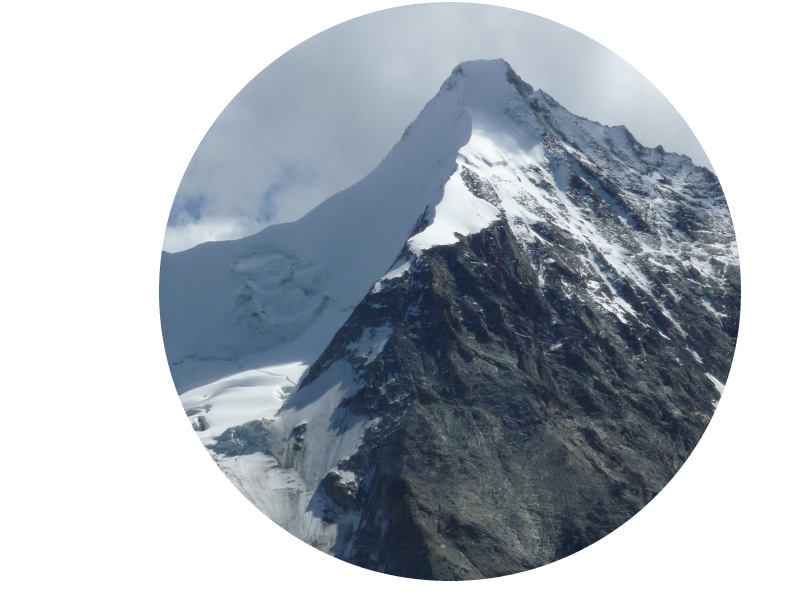bivouaquer ou renoncer ?
Le vieux principe selon lequel il faut à tout prix éviter de bivouaquer en montagne se justifiait à l’époque où l’équipement était rudimentaire. De nos jours, il est tout à fait possible de passer une nuit à la belle étoile en haute montagne, sans courir de dangers particuliers, si l’on applique quelques règles simples. Certains bivouaquent même pour le plaisir, ou pour éviter les refuges surchargés.
♦ Emplacement ♦ Organisation ♦ Savoir renoncer
Choix de l’emplacement du bivouac
C’est un élément très important. Pour que le choix soit possible il faut être prévoyant et y songer avant la tombée de la nuit.
Il faut que l’emplacement soit à l’abri des dangers objectifs (attention aux cheminées-cascades et à l’accumulation de la neige entre la paroi et le bivouac), à l’abri du vent et si possible sur une surface horizontale et plane.
Une rimaye ou une crevasse bouchée peuvent offrir un bon abri.
Organisation du bivouac
Installer en premier lieu un assurage mobile sous la forme d’une corde fixée à la paroi sur laquelle on fera coulisser les mousquetons d’auto-assurage. S’auto-assurer et assurer le matériel.
Aménager l’emplacement en enlevant les pierres gênantes et les utiliser pour construire un muret de protection contre le vent.
Bien stabiliser le réchaud et commencer à faire fondre la neige.
Etendre éventuellement le sac de bivouac en demi pente de toit en fixant un des côtés à la paroi l’autre étant maintenu par des pierres.
Utiliser corde, sac à dos, couverture de survie etc… en guise de matelas pour vous protéger du froid qui vient du sol.
Ne pas oublier de délasser les chaussures. On peut également enfiler les pieds dans le sac à dos. Certain sac à dos possèdent une armature amovible en mousse armée, à utiliser pour s’asseoir dessus.
Savoir renoncer
Pendant la course garder en mémoire quatre facteurs importants : l’humain, les conditions, le terrain, le timing.
Au point de non retour, une analyse de ces quatre facteurs aidera à décider de continuer ou non.
♦ dans quel état physique est la cordée ?
♦ les conditions de la course et météorologiques sont-elles bonnes ?
♦ le terrain est-il acceptable ?
♦ reste-t-il assez de temps ?
bivouac or give up?
The old principle that you should avoid bivouacking in the mountains at all costs was justified in the days when equipment was rudimentary. Nowadays, it’s perfectly possible to spend a night under the stars in the high mountains, without running any particular risks, if you follow a few simple rules. Some people even bivouac for pleasure, or to avoid overcrowded refuges.
♦ Site ♦ Organisation ♦ Know when to give up
Choosing a bivouac site
This is a very important factor. To make the right choice, you need to think ahead and think about it before nightfall.
The site must be safe from objective dangers (watch out for waterfall chimneys and snow accumulation between the wall and the bivouac), sheltered from the wind and, if possible, on a horizontal, flat surface.
A rimaye or blocked crevasse can provide good shelter.
Organisation of the bivouac
First, install a mobile belay device in the form of a rope attached to the wall on which you can slide the self-belay karabiners. Secure yourself and your equipment.
Arrange the site by removing any stones in the way and use them to build a low wall to protect against the wind.
Stabilise the stove and start to melt the snow.
If necessary, spread out the bivouac bag in a half-sloping roof, fixing one side to the wall and the other to the wall with stones.
Use a rope, rucksack, survival blanket etc. as a mattress to protect you from the cold coming from the ground.
Don’t forget to loosen your shoes. You can also slip your feet into the rucksack. Some rucksacks have a removable reinforced foam frame, which you can use to sit on.
Knowing when to give up
During the race, keep four important factors in mind: people, conditions, terrain and timing.
At the point of no return, an analysis of these four factors will help you decide whether or not to continue.
♦ What is the physical state of the team?
♦ Are the race and weather conditions good?
♦ Is the terrain acceptable?
♦ Is there enough time left?



Just what I was searching for, appreciate it for posting.
Thanks for your comment